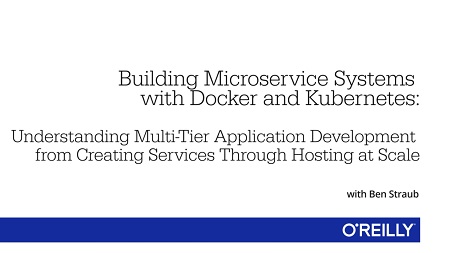
English | MP4 | AVC 1280×720 | AAC 48KHz 2ch | 2 Hours | 456 MB
Understanding Multi-Tier Application Development from Creating Services Through Hosting at Scale
This course teaches you how to build microservice systems hosted with Kubernetes. It’s intended for intermediate to advanced developers or DevOps engineers who have problems they think Kubernetes will solve, but are not sure about the best way to move forward. Participants should have some experience working on web applications as this is not a course on the basics of web hosting.
Prerequisites include a computer with Docker installed and some capability to run a Kubernetes cluster: This could be on physical machines, virtual machines using Vagrant, or an account (even a trial period account) with a cloud provider like Google or Amazon.
- Discover what Kubernetes is and how to get started using it
- Understand what Docker is and how to make an application with it
- Master the meaning of microservices and when and how to write them
- Understand database set-ups, request routing, and load balancing
- Explore API server choices (Flask, Gunicorn) and front-end tech choices (Ember.js, Nginx)
- Follow the creation of an email sending microservice from development through production
- Understand cross-cutting concerns like caching, scaling, logging, metrics, security, and multi-tenancy
Table of Contents
Introduction
Welcome And What To Expect
About The Author
How To Access Your Working Files
Building Blocks
Docker And Docker Hub
Docker Compose, Linking, And Ambassadors
Kubernetes
AWS
Infrastructure
Kubernetes Cluster
Database
Request Routing And Load Balancing
Middle Tier
Technology Choices – Flask And Gunicorn
Implementation And Testing
Development Environment
Production Environment
Front End
Technology Choices – Ember.js And NGINX
Implementation And Testing
Development Environment
Production Environment
Email-Sending Microservice
Why A Microservice?
Technology Choices – Ruby, Rails, And Mailgun
Implementation And Testing
Development Environment
Production Environment
Cross-Cutting Concerns
Deployment
Caching
Scaling
Logging
Metrics
Security
Multi-Tenancy
Conclusion
Wrap Up And Thank You
Resolve the captcha to access the links!